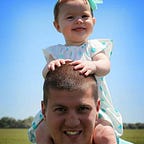A Brief History of Laravel
At Vehikl, we use the Laravel PHP framework in most of our web application development. We’ve long been a part of the Laravel and open source communities, actively contributing to both by authoring packages, volunteering time, and supporting conferences.
Once Upon a Time…
Up until about 4 years ago, the PHP community was a wasteland of competing frameworks. Conferences were a mass of framework creators talking about what they were working on and what their framework did best, engaging in boasting matches over whose framework was the best solution to a problem.
Today the community is far more cohesive and collaborative, and Laravel has evolved within that movement.
The Laravel Vision
Taylor Otwell, a .net developer in Arkansas, was using CodeIgniter when the first seeds of Laravel were planted.. “I couldn’t add all the features I wanted,” he says, “without mangling the internal code of the framework.” He wanted something leaner, more simple, and more flexible.
Those desires, coupled with Taylor’s .net background, spawned the framework that would become Laravel.
Traditionally, PHP had been like the wild west of programming languages. Because it is dynamically typed, there are a lot of things that could potentially go wrong with no warning. For example, in other languages, code is written in such a way that if a mistake is made it can be caught before code execution .Either by trying to use the code or by compiling it, the compiler would actually stop you, identify the problem in the code, and require you to fix it before moving forward.
Out of the box, PHP has none of that. So theoretically you can continue writing poor code without knowing whether or not it works, forever. When something does go wrong, you have to spend a lot of time hunting for the problem.
Taylor aimed to solve all of those problems with Laravel. He used the ideas of the .net infrastructure, which Microsoft has built and spent hundreds of millions of dollars of research on.
With Laravel, Taylor sought to create a framework that would be known for its simplicity. He added to that simplicity an expressive syntax, clear structure, and incredibly thorough documentation. With that, Laravel was born.
The Laravel Infrastructure
He started with a simple routing layer, a really simple controller-type interface (model, view, controller or MVC); v1 and v2 were released in June 2011 and September 2011, respectively, just months apart. Laravel 3 came just over a year later, in February 2012, and this is when Laravel’s user base and popularity really began to grow.
In May 2013, Laravel 4 was released as a complete rewrite of the framework, incorporated a package manager called Composer. Composer is an application-level package manager for PHP that allowed people to collaborate instead of compete.
Before Composer, there was no way to take two separate packages and use different pieces of those packages together to create a single solution. First you’d have to download the files, put them into a certain spot, figure out how to use them, and blah, blah, blah.
Composer became the tipping point where suddenly all of these framework authors starting looking at one another and started to see the benefits of collaboration instead of competition, and Laravel began to make a real impact in the PHP world. Today, we’re using Laravel 5.2, with Taylor continuing to make improvements and innovations to the framework.
Lassoing in the Cowboys (and Girls)
As word spread, a lot of people who were doing the whole wild west PHP thing started to pay attention to Laravel. People started to appreciate that Laravel was very structured, the syntax was nice, it was expressive, and the components were named well. Taylor’s aim has been to build a framework that can take the most unskilled programmer from nothing to something; to make the experience of launching an online application enjoyable.
Jeffrey Way, a well-known PHP developer and vocal Laravel evangelist, says he had a “gut feeling” about Laravel. Taylor’s “instincts were simply different,” he says:
“I had the distinct impression that he understood something that most framework/library maintainers don’t: at the end of the day, Laravel is a product. This means, while the code is of course most important, developer happiness, ease of use, flexibility, and branding are equally vital…Laravel made coding fun, regardless of your skill level.”
One of Laravel’s mottos is “developer happiness from download to deploy.” Over the lifetime of Laravel thus far, Taylor and the open source community have continually updated and improved the framework, which remains free to use.
A large and passionate community has grown around the framework, and Vehikl is a proud part of that community. We not only use Laravel in building applications for ourselves and for our clients, we’re active in the open source community and enjoy supporting, attending, and sponsoring conferences, including the official Laravel conferences, Laracon US and Laracon EU. Laracon US began with around 70 attendants in 2013 and has grown to over 500 in 2015 and 2016, reflecting the growth of Laravel and its community.
